Paper Sizes
Standard sizes are more cost effective as they make the most economical use of the paper (for example):
Letterheads - A4 (210 x 297mm)
Business Cards - 88mm x 55mm / 85mm x 55mm
Compliments slips - DL (210mm x 99mm)
Other sizes
A Sizes
A0 841 x 1189mm
A1 594 x 841mm
A2 420 x 594mm
A3 297 x 420mm
A4 210 x 297mm
A5 148 x 210mm
A6 105 x 148mm
A7 74 x 105mm
A8 52 x 74mm
B Sizes
B0 1000 x 1414mm
B1 707 x 1000mm
B2 500 x 707mm
B3 353 x 500mm
B4 250 x 353mm
B5 176 x 250mm
Envelope Sizes
C3 457 x 324mm
C4 229 x 324mm
C5 162 x 235mm (OVERSIZE)
C5 162 x 229mm
DL 114 x 232mm (OVERSIZE)
DL 110 x 220mm
DL 102 x 214mm (UNDERSIZE)
C6 114 x 162mm
Download our useful reference document for a full guide to paper sizes.
Printing Processes
Digital
Very cost effective for short run printing, it works directly from electronic data and print is in four colour process. The quality is not quite on a par with lithography and you cannot use single Pantones®, metallic inks or varnish.
Litho
By far the most popular print process, a metal plate is treated so that the image area attracts the inks, while the wet non-image areas resist them. The process is more expensive than digital though and only starts to pay for itself on larger runs.
Screen
Historically the oldest form of printing. Ink is applied to a porous silk screen and passes through a stencil or template to leave an impression. Normally used for t-shirt printing and banners.
Thermal
The process of creating an image using a heated print head. The print does not smear and is water resistant.
Web offset
A method of printing which uses a continuous roll of paper. They are very fast presses and are only suitable for very large print runs.
Colour Printing
Four colour process / CMYK: printing in full colour. The inks used are translucent and can be overprinted to produce a variety of different colours.
Spot Colour Printing
Refers to solid colours which are found in commercially obtainable colour ranges such as Pantone®. Two colour printing is used regularly for printing stationery, in order to save money on inks.
It is worth bearing in mind for future jobs that should you want to print in CMYK, the chosen Pantone® may not have a suitable CMYK equivalent, which may in turn lead to the added expense of using a fifth plate.
Metallic inks
Spot colours which produce gold, silver, bronze or metallic effects.
Trimming
Almost every project will need to be trimmed to the finished size after printing, exactly how soon afterwards will vary depending on which binding method is used.
Folding
There are many options, with different terms – download our handy guide for full options.
Please note: some of these styles will not be achievable in certain paper/board weights, please check with us.
Binding
Depending on paper weights, number of pages and size you have a wealth of choices…
Saddle Stitch (Fold, Stitch and Trim)
One of the most popular and cost effective methods of binding, using wire staples to secure folded sections together in book form. Up to approximately 80 pages (20 x 4 page sections) depending on paper thickness.
Loop Stitching
Exactly the same as Saddle Stitching except the wire staples take the shape of a loop that protrudes from the spine of the document allowing it to be filed directly into a ring binder without the need to place into a punched wallet.
Wiro Binding
Individual leaves of paper are gathered in page order (collated) and secured using looped wire that fixes into holes down the left hand side of the page. Front and back covers can be separate or have a spine, this is usually known as “Half Canadian or Full Canadian Binding”.
Spiral binding
Similar to Wiro Binding but uses a continual looped wire that fixes into holes down the left hand side of the page. Both Wiro and Spiral Binding allows for products to lie flat when opened.
Perfect binding
This is often used for binding books and large brochures. The printed sections are collated and held in the spine using glue. This can also be strengthened with the added use of Thread Sewing the sections of pages.
Creasing/Scoring
Used on heavier paper weights (usually 200gsm and above) needed to help prevent cracking.
Materials (Paper/Board)
There are many different paper mills offering an extensive range of papers, most of which fit into one of the following categories; gloss coated, silk or satin coated and matt uncoated.
All the terms are pretty self-explanatory, so you just have to think about what impression you want to make and remember that uncoated papers are more likely to absorb the inks, leaving a slightly softer finish.
GSM
An abbreviation for grams per square metre, which indicates how heavy paper or card stock is. As a guide, you could work on the premise that copier paper is approximately 90-100gsm, while at the other end of the scale, postcard stock is between 350-400gsm.





